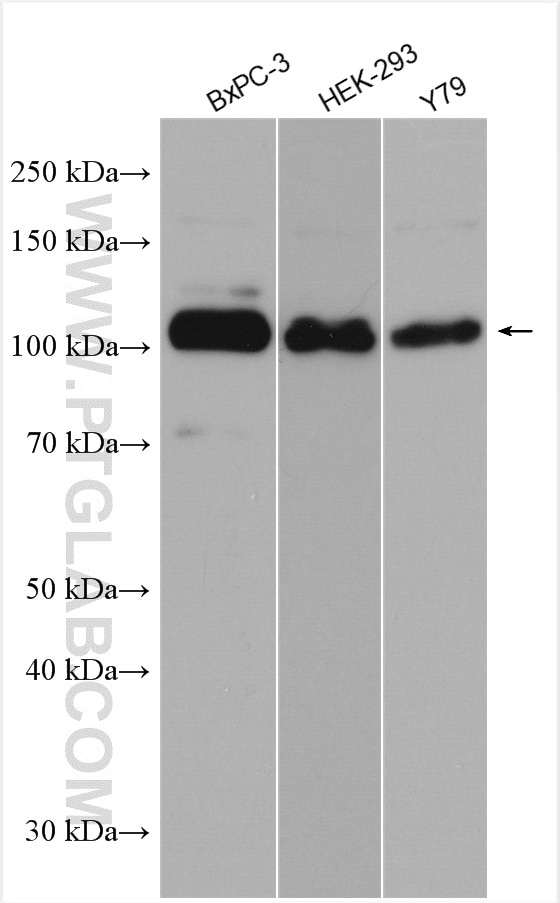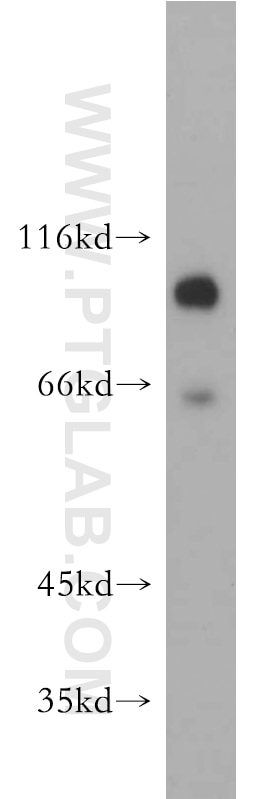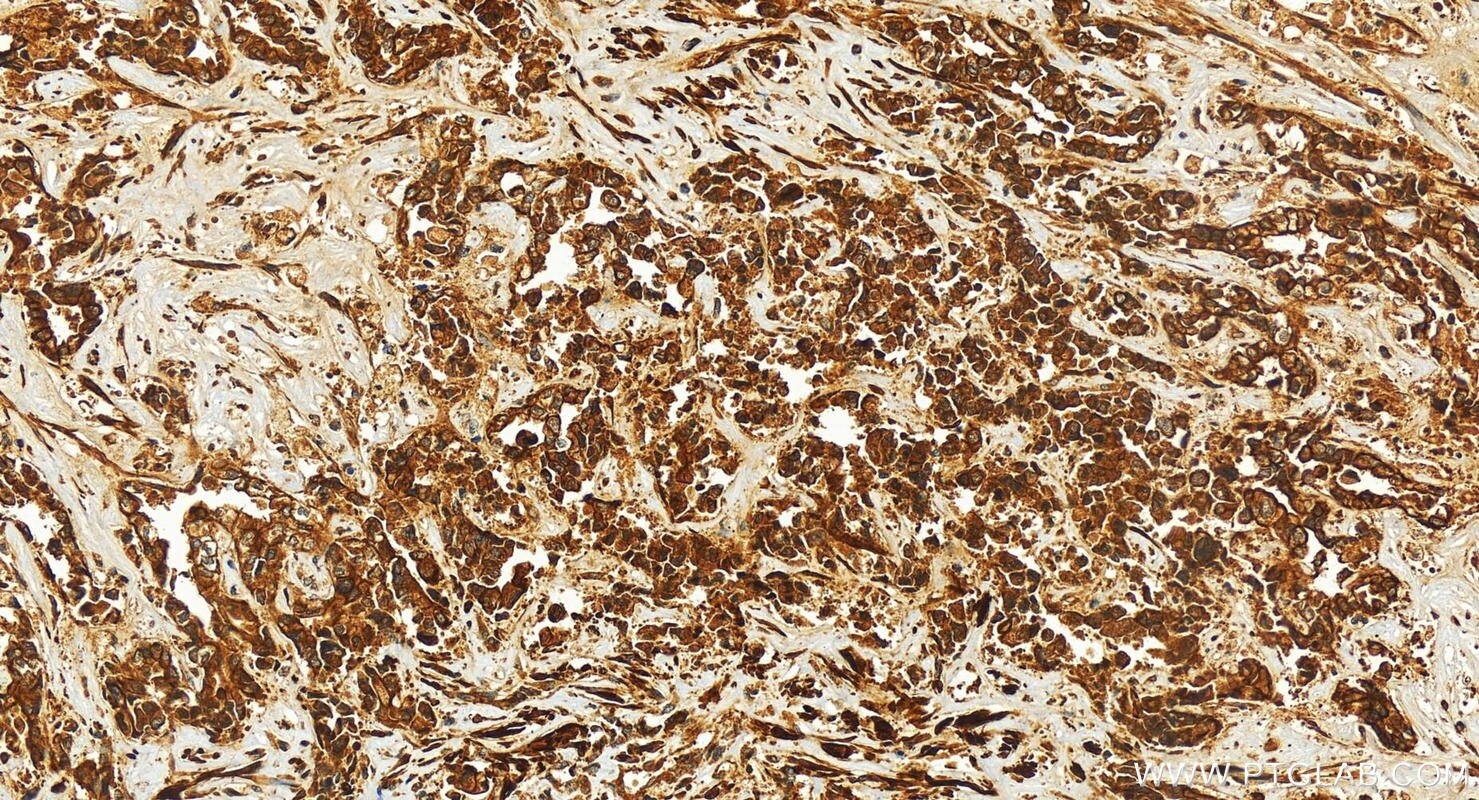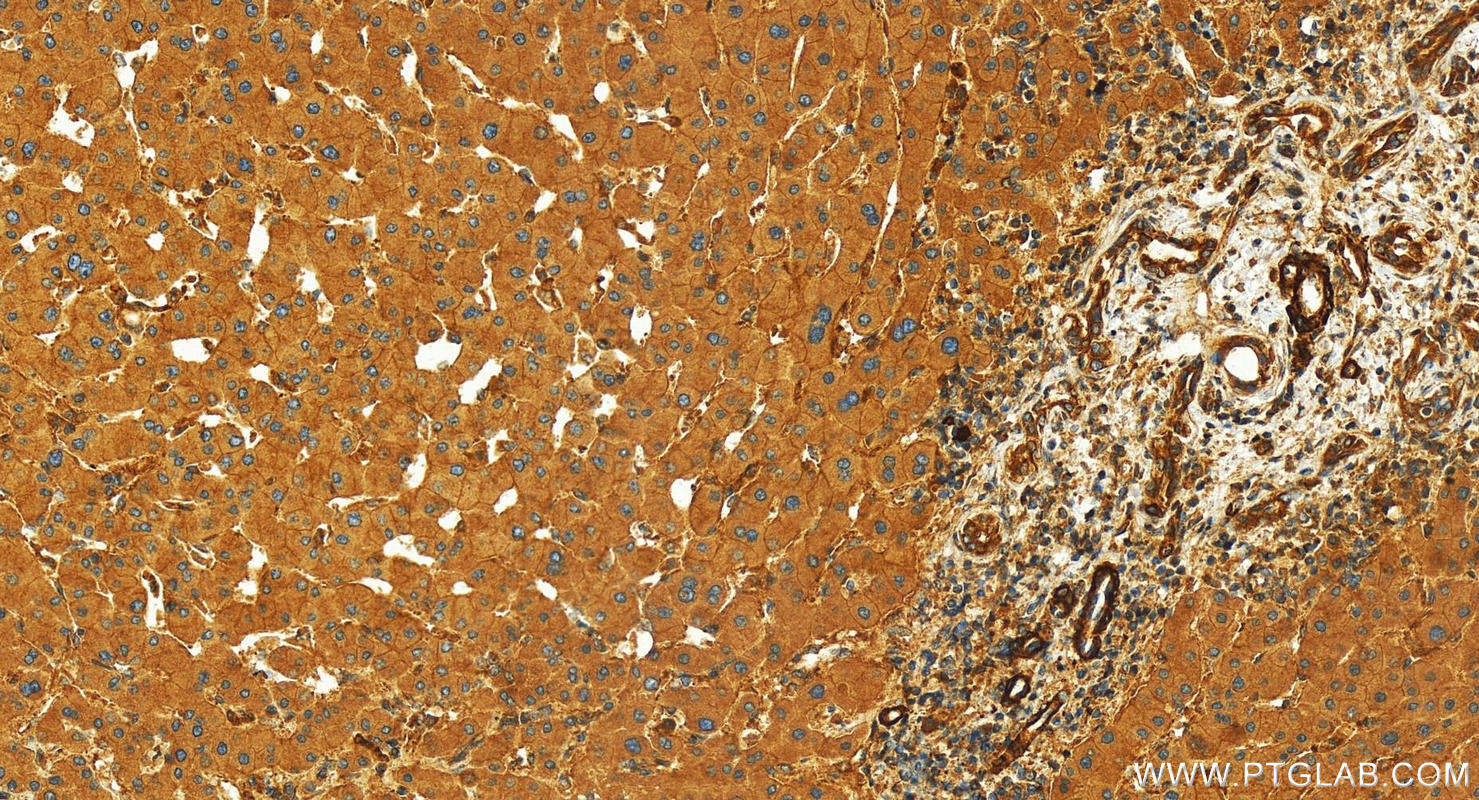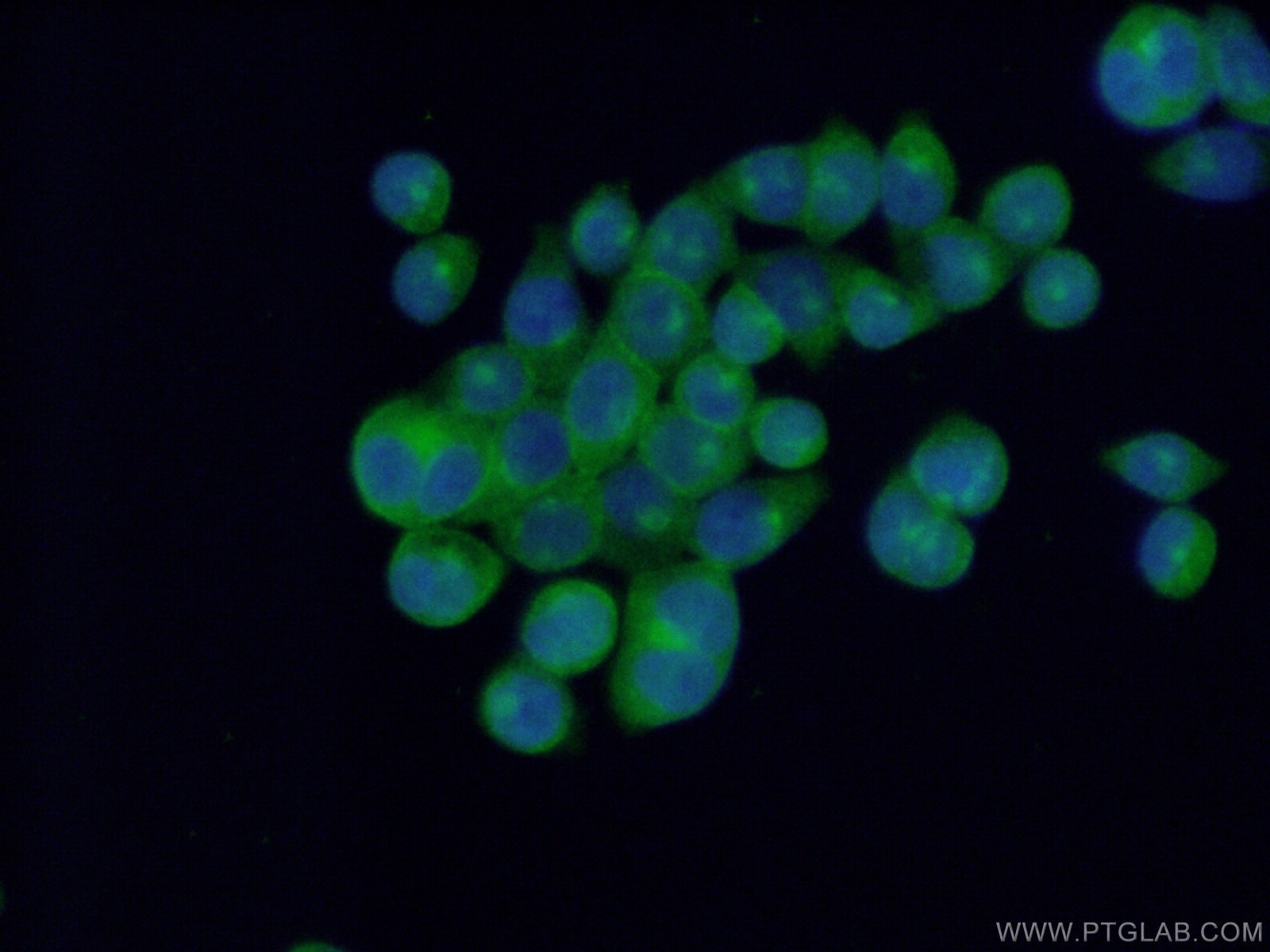EPS15R Polyklonaler Antikörper
EPS15R Polyklonal Antikörper für WB, IHC, IF/ICC, ELISA
Wirt / Isotyp
Kaninchen / IgG
Getestete Reaktivität
human und mehr (1)
Anwendung
WB, IHC, IF/ICC, ELISA
Konjugation
Unkonjugiert
Kat-Nr. : 21243-1-AP
Synonyme
Geprüfte Anwendungen
| Erfolgreiche Detektion in WB | BxPC-3-Zellen, HEK-293-Zellen, MCF-7-Zellen, Y79-Zellen |
| Erfolgreiche Detektion in IHC | human intrahepatic cholangiocarcinoma tissue Hinweis: Antigendemaskierung mit TE-Puffer pH 9,0 empfohlen. (*) Wahlweise kann die Antigendemaskierung auch mit Citratpuffer pH 6,0 erfolgen. |
| Erfolgreiche Detektion in IF/ICC | BxPC-3-Zellen |
Empfohlene Verdünnung
| Anwendung | Verdünnung |
|---|---|
| Western Blot (WB) | WB : 1:2000-1:14000 |
| Immunhistochemie (IHC) | IHC : 1:50-1:500 |
| Immunfluoreszenz (IF)/ICC | IF/ICC : 1:50-1:500 |
| It is recommended that this reagent should be titrated in each testing system to obtain optimal results. | |
| Sample-dependent, check data in validation data gallery | |
Veröffentlichte Anwendungen
| WB | See 2 publications below |
Produktinformation
21243-1-AP bindet in WB, IHC, IF/ICC, ELISA EPS15R und zeigt Reaktivität mit human
| Getestete Reaktivität | human |
| In Publikationen genannte Reaktivität | human, Hausschwein |
| Wirt / Isotyp | Kaninchen / IgG |
| Klonalität | Polyklonal |
| Typ | Antikörper |
| Immunogen | EPS15R fusion protein Ag15735 |
| Vollständiger Name | epidermal growth factor receptor pathway substrate 15-like 1 |
| Berechnetes Molekulargewicht | 864 aa, 94 kDa |
| Beobachtetes Molekulargewicht | 94 kDa |
| GenBank-Zugangsnummer | BC142716 |
| Gene symbol | EPS15R |
| Gene ID (NCBI) | 58513 |
| Konjugation | Unkonjugiert |
| Form | Liquid |
| Reinigungsmethode | Antigen-Affinitätsreinigung |
| Lagerungspuffer | PBS with 0.02% sodium azide and 50% glycerol |
| Lagerungsbedingungen | Bei -20°C lagern. Nach dem Versand ein Jahr lang stabil Aliquotieren ist bei -20oC Lagerung nicht notwendig. 20ul Größen enthalten 0,1% BSA. |
Hintergrundinformationen
EPS15R is a protein that belongs to the Eps15 family of proteins, which are known for their roles in intracellular trafficking, particularly in the regulation of endocytosis and vesicle formation. EPS15R, like other members of the Eps15 family, functions as a scaffolding adaptor protein and is involved in both secretion and endocytosis. It has been shown to bind to AP-1 and AP-2 complexes, inositol lipids, and several other proteins that are crucial for the regulation of intracellular trafficking. EPS15R is also implicated in the regulation of membrane morphology, which is essential for intracellular vesicle formation and trafficking . It has been detected in the nucleus of mammalian cells, and its activation through growth factor receptors induces tyrosine phosphorylation and mono-ubiquitination, although the specific roles of these post-translational modifications are not yet fully understood
Protokolle
| PRODUKTSPEZIFISCHE PROTOKOLLE | |
|---|---|
| WB protocol for EPS15R antibody 21243-1-AP | Protokoll herunterladen |
| IHC protocol for EPS15R antibody 21243-1-AP | Protokoll herunterladenl |
| IF protocol for EPS15R antibody 21243-1-AP | Protokoll herunterladen |
| STANDARD-PROTOKOLLE | |
|---|---|
| Klicken Sie hier, um unsere Standardprotokolle anzuzeigen |
Publikationen
| Species | Application | Title |
|---|---|---|
Emerg Microbes Infect CD1d facilitates African swine fever virus entry into the host cells via clathrin-mediated endocytosis |
